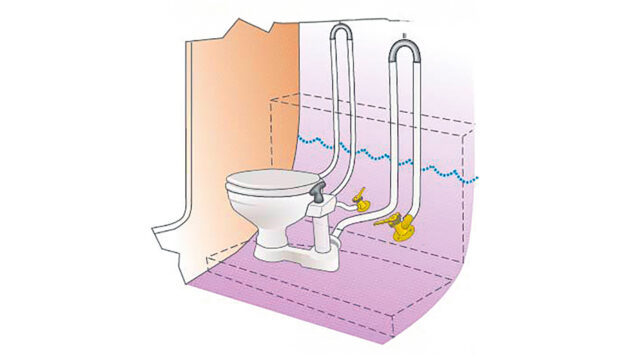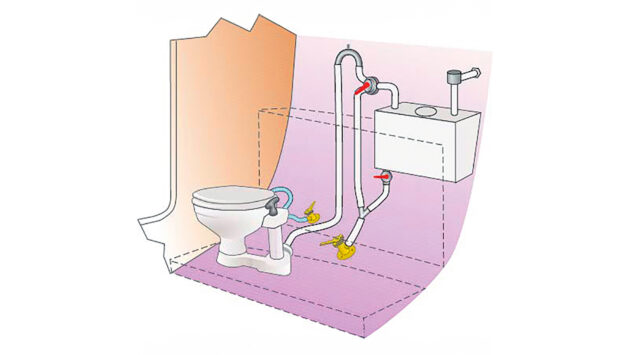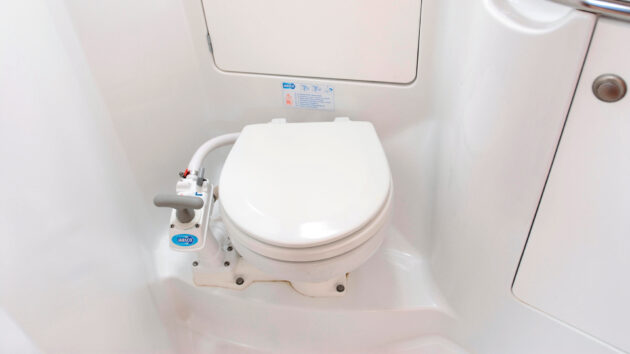RYA boat maintenance Handbook author, Andrew Simpson explains ow to keep your heads smelling sweet
All marine toilets have a functional similarity about them. The traditional method is to pump the waste directly into the sea. It’s only acceptable to pump out sewage into the sea at least three miles offshore, as the waste will be quickly diluted and dispersed by wave actions and currents.
However, increasingly there are areas where this is illegal and heavy fines can be imposed. The other approach is to store the waste in a ‘holding tank’ until it can be pumped out ashore or discharged into waters where it will disperse and be unlikely to offend others.
It’s important proper sanitation-grade hoses are used. Lesser-grade hoses are more permeable and will release unpleasant odours. You can identify the permeable type by wiping the hose with a rag dipped in hot water, allowing it to cool, and sniffing. If you get a whiff, you should consider changing the hose.

Traditional direct discharge toilets are found on older boats
The stench that greets you after leaving your boat shut up for some time is from the inlet hose, not from the discharge. When you closed the inlet seacock, the micro-organisms trapped inside the hose died and have since decomposed.
The smell will soon disappear once you start using the toilet but some boats have an arrangement for filling the hose with fresh water before you leave it.
A common problem is the build-up of uric acid scaling inside the discharge hose. There are proprietary products to remove this, although many skippers use white vinegar, half-a-litre of which should be poured into the bowl and then pumped slowly, in stages, through the hose once a month. Toilets also benefit from lubrication, ideally by means of a specially formulated lubricant.
For direct discharge toilets you can use vegetable or mineral oils, but not if you have a holding tank. The oil can float to the top, sealing the waste from the air, and promoting anaerobic decomposition and the odours that go with it. Apply a light wipe of PTFE grease to the pump piston shaft. This will reduce wear on the seal so it will last longer.

Increasingly, modern yachts have a holding tank fitted as standard
Finally, carry a set of spare seals and valves, along with toilet service instructions. Marine toilets can be stripped with basic tools and a pair of rubber gloves!
Holding tanks
A well-designed holding tank, appropriately ventilated to allow aerobic breakdown of the waste, should take care of itself without attention. However, there are ways you can help.
Specially formulated additives can be added. These contain enzymes to reinforce those already in the waste – the object being to stimulate the natural microbiological process. Also, go easy on the toilet paper and avoid quilted types. Build-ups of paper are perhaps the commonest cause of blockages. A useful boat rule is: ‘You block it, you clear it!’
Enjoyed reading this?
A subscription to Yachting Monthly magazine costs around 40% less than the cover price, so you can save money compared to buying single issues.
Print and digital editions are available through Magazines Direct – where you can also find the latest deals.
YM is packed with information to help you get the most from your time on the water.
-
-
- Take your seamanship to the next level with tips, advice and skills from our experts
- Impartial in-depth reviews of the latest yachts and equipment
- Cruising guides to help you reach those dream destinations
-
Follow us on Facebook, Twitter and Instagram.
Note: We may earn a commission when you buy through links on our site, at no extra cost to you. This doesn’t affect our editorial independence.





